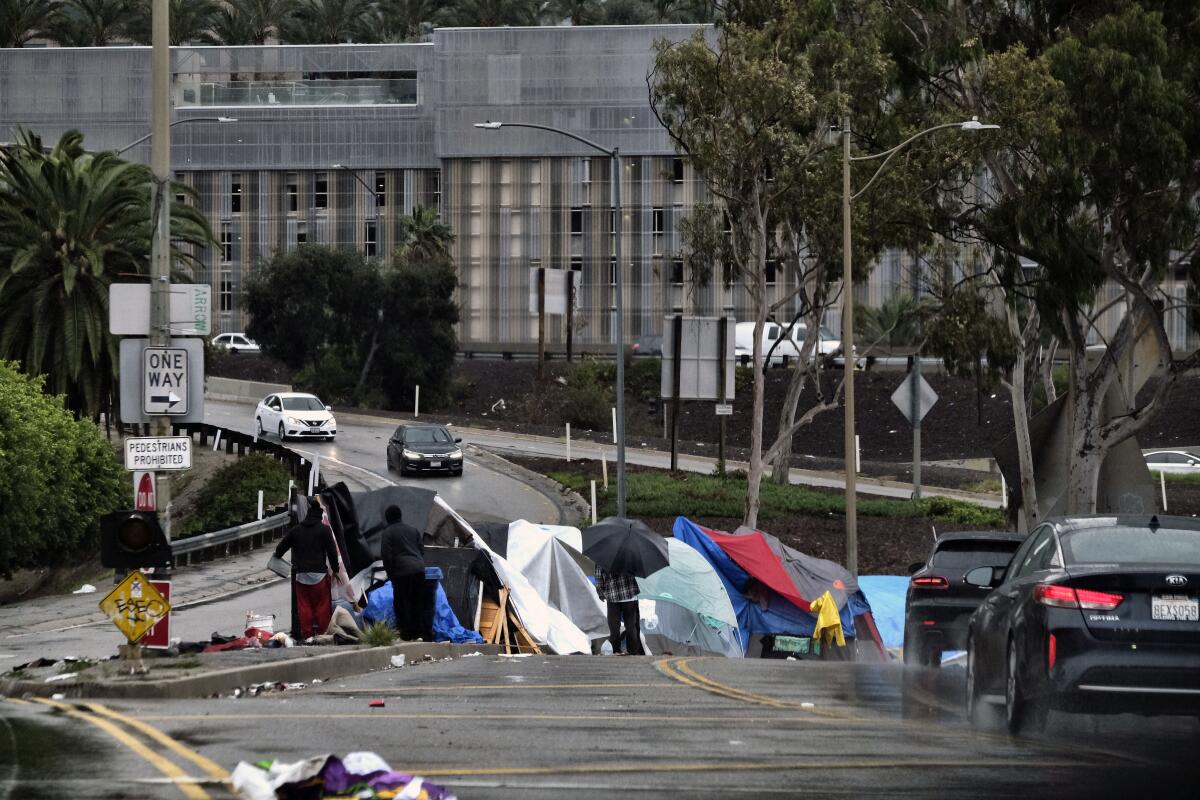Editorial: Want to stop the prison-to-street pipeline? Pass this bill to provide housing

- Share via
Californians who are released from state prison get “gate money” to help get them home. “Do not waste this money,” the official parolee handbook advises. “Gate money should be used for needs like food, a room, and travel.”
When it comes to the room, gate money doesn’t go as far as it used to. In 1973, the $200 the state provided might have been enough for a bus ticket from San Quentin to Los Angeles and a couple months in a decent apartment. With enough luck and outside help, that might have been sufficient time to find work that paid enough to keep the former prisoner housed. But the state hasn’t increased its payment in almost a half-century, and the same $200 today means a bus ride, a sandwich and at most a night or two in a cheap motel. After that, many people wind up homeless. The state’s system amounts to a prison-to-street pipeline.
That’s worked out poorly. Researchers have found a strong link between leaving prison and living in tents or makeshift cardboard shelters. That’s especially true in places like Los Angeles where housing prices have skyrocketed over the course of a typical prison term. Unaffordable housing costs increase the chance that a person who leaves prison will return, because instead of a secure dwelling with a warm bed and a door that locks, the mean streets offer little but desperation and the danger of falling back into bad habits such as drug use and theft.
The smart move is to help the thousands of people who leave California prisons each month find housing so they don’t end up on the street. Housing is an integral part of any smart homelessness strategy. Increasing the gate money payment won’t do the trick.
Meanwhile, after decades of growth in prisons and the number of people who fill them, California’s incarcerated population is slowly declining. Gov. Gavin Newsom has ordered the closure of Deuel Vocational Institution in Tracy and the California Correctional Center in Susanville. The considerable savings reaped from no longer running those institutions should be reallocated to reentry programs that house people coming home. Last year, Assemblymember David Chiu, a San Francisco Democrat, introduced AB 328, a bill to create the Reentry Housing and Workforce Development Program, which would provide grants, incentives and other support for people leaving prison.
But the Susanville closure has been suspended pending a lawsuit, so the savings are also on hold. Chiu left the Legislature last year to become San Francisco’s city attorney.
“What am I going to do with an apartment?”
The need for reentry housing hasn’t slowed, though, and California has an unusual, and enormous, surplus of funds, so there’s no reason to delay a program to keep people off the street and reduce criminal recidivism. Assemblymember Isaac Bryan, a Los Angeles Democrat, and several of his colleagues are recrafting the bill to launch a pilot project funded by $200 million from the state’s surplus. If it fails to get out of the Appropriations Committee this week, they will introduce a new bill to accomplish the task. Either route works. It’s time to create and fund the program.
Funding will be available on a year-to-year basis once the California Correctional Center closes, and that ought to be followed by other, well-considered closures (and cost savings) as the prison population declines and much of the state’s overbuilt complex of carceral facilities reaches the end of its useful life. That may not be enough to fully fund the array of badly needed reentry programs for people coming home, but it is at least a step toward reinvesting in programs that protect us all by keeping people out of prison when they don’t need to be there.
More to Read
A cure for the common opinion
Get thought-provoking perspectives with our weekly newsletter.
You may occasionally receive promotional content from the Los Angeles Times.










